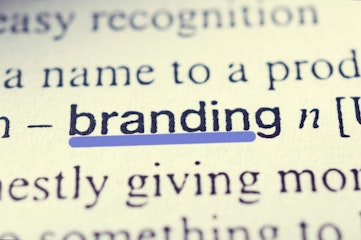It’s tempting, in our hyper-digital age, to believe that marketing lives entirely online. Social media campaigns, SEO, targeted ads - these tools dominate conversations. Yet walk down any high street, step into a trade show, or glance at a poster at your local gym, and you’ll be reminded: offline marketing isn’t just alive, it’s thriving.
The real challenge for businesses today isn’t choosing between online and offline marketing. It’s finding the balance that makes them work together.
Why Balance Matters
Customers don’t live exclusively online or offline. Their journeys are mixed. Someone might see your Instagram advert at breakfast, notice your exhibition stand at a local fair by lunchtime, and then search for reviews in the evening. Every touchpoint reinforces the others.
Too much reliance on digital risks leaving you invisible in physical spaces. Too much focus on offline methods, and you miss the vast reach and precision targeting of online platforms. Balance gives your brand resilience and reach.
The Strengths of Online Marketing
Online marketing has obvious advantages:
Measurable results: You can track clicks, conversions, and ROI in real time.
Precise targeting: Ads can be directed at specific demographics, interests, or even behaviours.
Scalability: Campaigns can be launched and adjusted quickly, at relatively low cost.
From email newsletters to Google Ads, online methods excel at keeping brands present in customers’ day-to-day browsing.
But there’s a catch. Digital noise is relentless. Audiences are bombarded with ads daily. Standing out takes more than a budget - it takes creativity, timing, and persistence.
The Power of Offline Marketing
Offline marketing, meanwhile, plays on the strength of presence. It’s tangible. It sticks in the mind because you experience it in the real world.
Think:
A striking shopfront display.
Flyers that land directly in someone’s hand.
Trade show booths where customers can speak to you face-to-face.
Portable advertising stands for events that make a brand impossible to miss.
Offline marketing often feels more personal and trustworthy. It reaches customers who aren’t online all the time (and yes, they still exist). Plus, it creates memorable experiences, something digital often struggles to replicate.
Where the Two Meet
The sweet spot isn’t favouring one over the other but recognising how they complement each other. A customer sees your roller banner at an expo, scans a QR code, and lands on your website. Someone finds you on Facebook, then later encounters your branded display at a local event - confirming that your business is real and rooted in their community.
In other words, offline marketing adds tangibility to online efforts, while online marketing extends and amplifies offline reach.
Practical Ways to Balance Both
1. Integrate Campaigns
Rather than running online and offline promotions separately, connect them. A billboard can point to a hashtag campaign. A trade show stand can link visitors to an email sign-up via QR code.
2. Use Data to Guide Offline Decisions
Analytics from digital campaigns can reveal where your audience spends time. That data can guide offline investments - such as choosing which exhibitions to attend or where to distribute flyers.
3. Bring Offline Online

Capture moments from physical events and share them online. Photos of your exhibition stand, snippets from a community event, or even customer testimonials collected in person can feed into digital content.
4. Encourage Interaction
Offline assets can be interactive too. Touchscreens at events, augmented reality experiences, or simply well-designed banners that invite scanning or sharing can create bridges to online engagement.
5. Maintain Consistency
Your tone, visuals, and message should feel cohesive across platforms. If someone sees your advert online and later encounters your brand offline, the experience should reinforce the same identity.
Potential Pitfalls
Balancing online and offline marketing isn’t always smooth. Common pitfalls include:
Overinvesting in one channel: Online ads may seem cheaper upfront, but offline builds trust in ways digital alone can’t.
Mixed messaging: A polished digital presence alongside outdated offline materials can confuse customers.
Neglecting measurement: Offline marketing can feel harder to track. But with tools like QR codes, unique URLs, and customer surveys, it’s possible to measure effectiveness.
A Note on Timing
Not all strategies need equal investment at all times. Product launches, for instance, might benefit from heavy offline visibility - think exhibitions, local events, or banners - paired with targeted online campaigns. Meanwhile, brand maintenance may lean more heavily on digital, with occasional offline reinforcement.
The point is flexibility. Marketing isn’t static; it shifts with customer behaviour and business needs.
The Bigger Picture
Marketing has never been about choosing one tool over another - it’s about orchestration. Like instruments in an orchestra, online and offline strategies each have their strengths. Alone, they can be powerful. Together, they create harmony that resonates with customers across every touchpoint.
At Display Wizard, we’ve seen first-hand how businesses benefit from bridging the gap. Offline tools like banners, stands, and displays remain essential - despite the dominance of digital - because they bring a brand into the physical world. (There’s a reason we wrote about why banners remain effective in the digital age.)
Final Thoughts
Balancing online and offline marketing strategies isn’t about splitting your budget down the middle. It’s about recognising that customers move between physical and digital spaces seamlessly - and your brand should too.
Done well, the two sides don’t compete. They strengthen each other. And in a world where trust, visibility, and memorability are everything, that balance can make all the difference.








